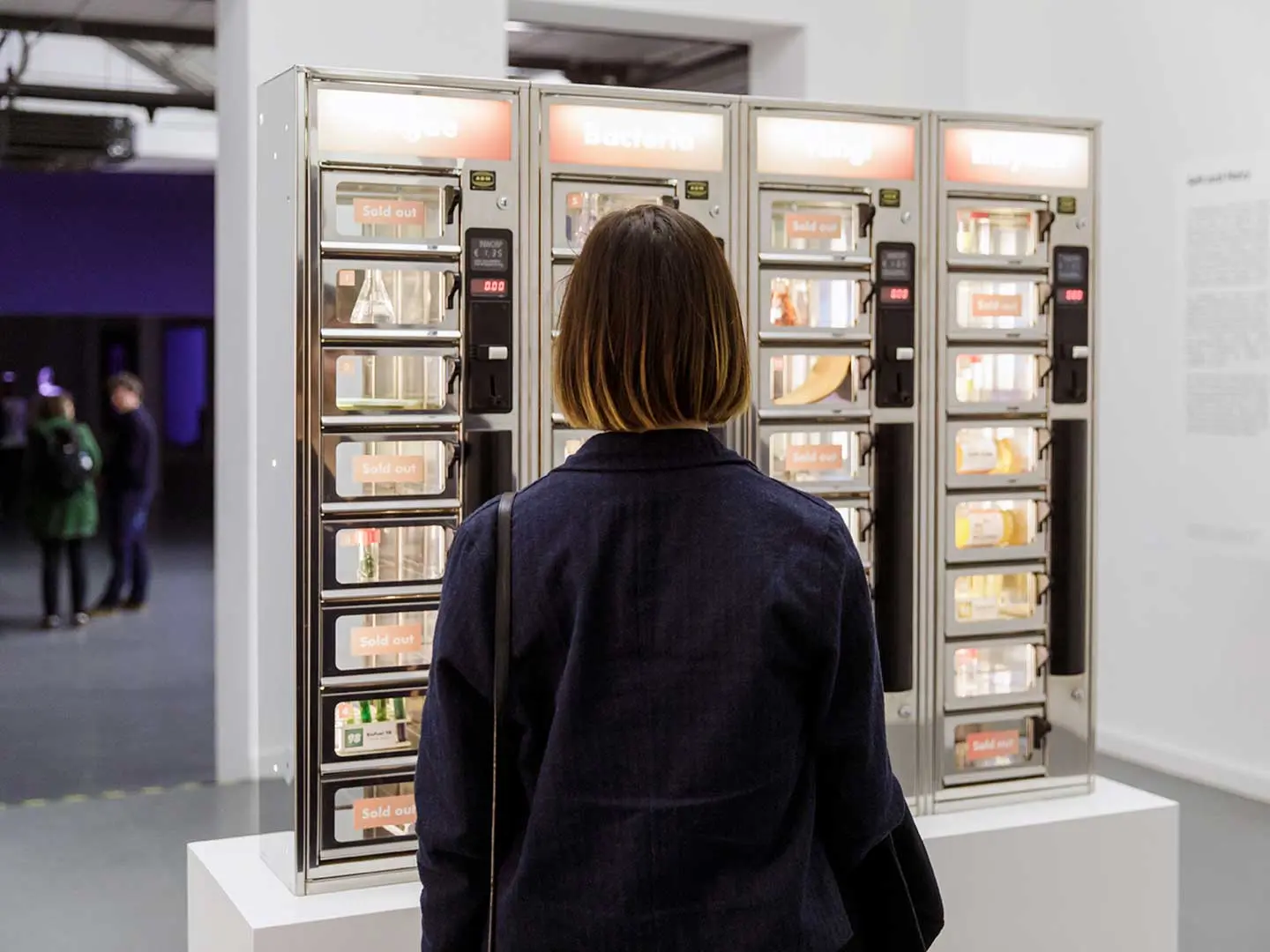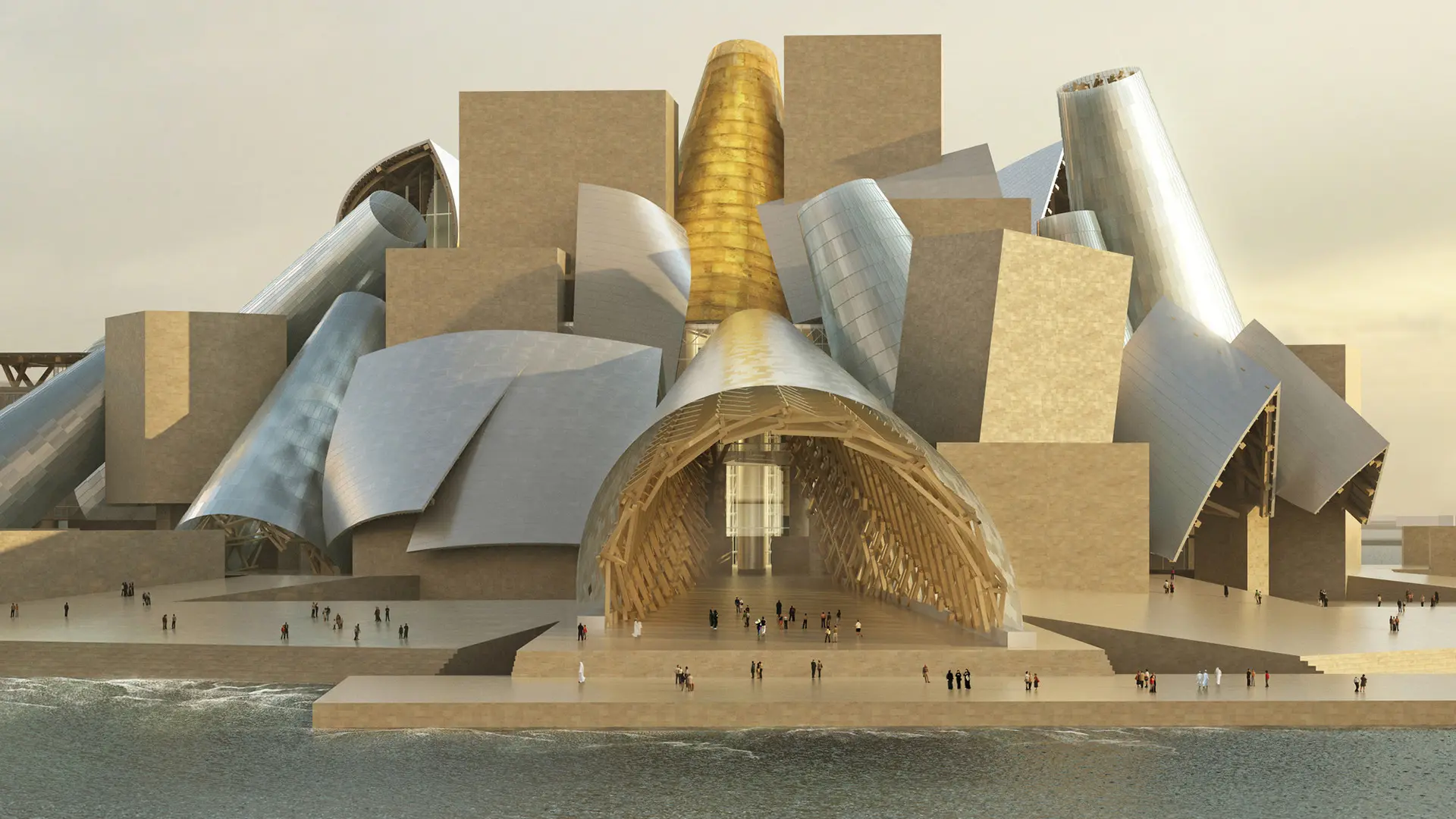From BIG to David Chipperfield, Frank Gehry to Snøhetta: a world tour of the best buildings set to open in 2026
Biomaterials and the new frontier of living materials: bacteria

Emma van der Leest - Ph. Aad Hoogendoorn
The third appointment with “Living Materials”, the new column devoted to the materials of the future by Daniela Amandolese, researcher and professor at the German University in Cairo.The potential of symbiotic design between humans and living organisms
“It all started with biology and nature. Everything we did, everything we had, came from biology,” says Suzanne Lee, CEO of Biofabricate.
Biology enables us to use resources more efficiently — less land, less water, less energy — and, ideally, without harmful chemicals, enabling us to imagine a world in which abundance is no longer linked to exploitation and extraction, avoiding those processes that have generated the current environmental imbalances.
Within this framework, Suzanne Lee, a leading figure in biodesign (the intersection between biology and design), discusses the fourth industrial revolution, notable for the emergence of new living, cultivated materials. Made from living cells such as bacteria, algae, fungi and yeasts, these materials offer sustainable alternatives to traditional production methods. The design and production of these materials and their application (product, fashion, packaging, architecture...) are created by the efforts of interdisciplinary teams of chemists, designers, architects and biotechnologists.
“Both the arts and sciences are activities that seek to discover and communicate truths about the world.” Gunther S. Stent, molecular biologist.
“I expect that the biggest revolutions in the design industry will come from working together with synthetic biology.” Paola Antonelli, architect, designer, Senior Curator of Architecture & Design at The Museum of Modern Art.
After exploring the potential for materials based on mycelium and algae, this article deals with materials made through co-design with bacteria.
Traditionally, in art and architecture, microorganisms have been perceived as a threat, particularly for the preservation and prevention of biodeterioration. Historical figures such as Robert Koch and Louis Pasteur described bacteria as “invasive animals”, and they have been identified as pathogens ever since, in the nineteenth century, science discovered a connection between bacteria and diseases. In recent times, however, bacteria have been rehabilitated within a post-anthropocentric approach, attempting to cope with biodiversity loss and ecosystem health. In fact, an increasing number of designers have begun to explore the use of bacteria in design, with microorganisms treated as active partners in the design process. For example, techniques are being developed that exploit the ability of bacteria to produce natural pigments, allowing fabrics to be colored without using toxic chemicals. Another promising experiment is the integration of microorganisms directly into materials, so that they can repair themselves or adapt to environmental conditions.
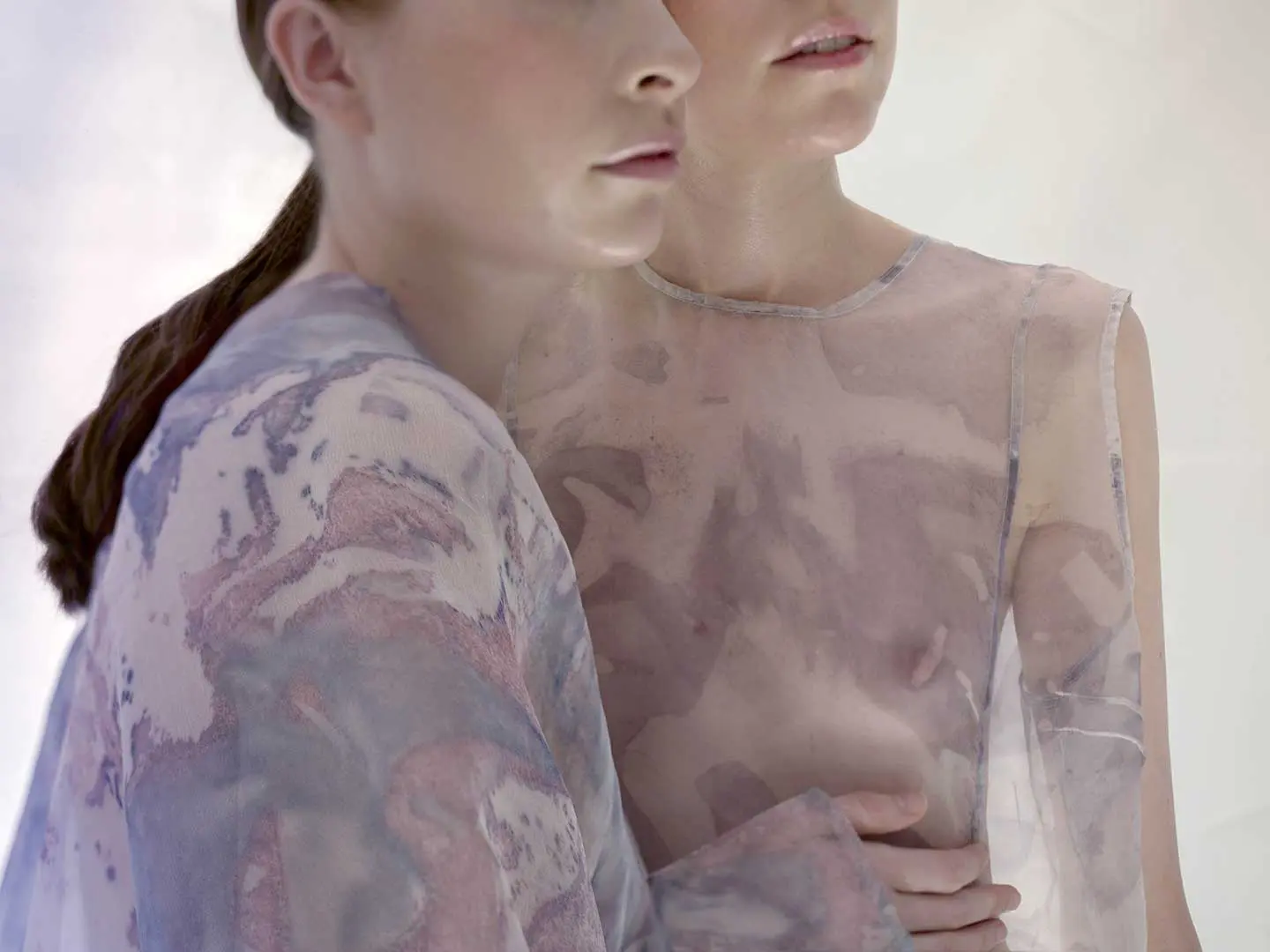
Faber Futures - Ph. Immatters Studio
In addition, designers’ approach to bacteria promotes a post-anthropocentric view of design, in which living things, including microorganisms, are considered collaborators rather than mere resources. This synergy between designers and bacteria opens the way to new aesthetic and functional possibilities. It also invites deeper reflection on how we interact with the natural world and ways of working together to cope with current environmental challenges.
Normal Phenomena of Life
After years of research into the interaction of design with biotechnology, Natsai Audrey Chieza and Christina Agapakis created Normal Phenomena of Life (NPOL), a biodesign brand and e-commerce platform retailing biotechnology-enabled products. Their research and experimentation rests on the belief that petroleum-derived materials can be replaced with low-resource, zero-emission alternatives, obtained through biological processes such as fermentation.
One of the products on the platform is Gathering Lamp, made with Biomason Biolith ® tiles, produced through room temperature reactions activated by bacteria capable of transforming sand into stone. This portable lamp is designed to be completely dismantled, with replaceable, repairable or recyclable modular components. Hand-assembled with minimal intervention, the Gathering Lamp reflects the economy of nature’s resources, designed to be reused and recovered endlessly. Each tile is unique, so the color and finish can vary slightly.

Normal Phenomena of Life (Npol)
Biomason and Stone Cycling
Both Ginger Krieg Dosie and Ward Massa started their companies to tackle big challenges in the built environment: BioMason to reduce the impact of cement production and StoneCycling to tackle the problem of waste generation.
Portland cement (OPC) production accounts for more than 8% of global CO₂ emissions, an impact four times greater than the airline industry’s. Biomason, based in the Research Triangle Park, produces cement in a completely different way, eliminating emissions. BioMason consists of calcium carbonate crystals formed by the action of bacteria in a sandy solution. BioBasedTiles are preformed concrete tiles that boast one of the lowest carbon footprints on the market.
“The demand for low-carbon building materials is outstanding,” said StoneCycling’s Massa. “The goal of our partnership with Biomason is to speed the use of building materials and architecture with a low environmental impact.”
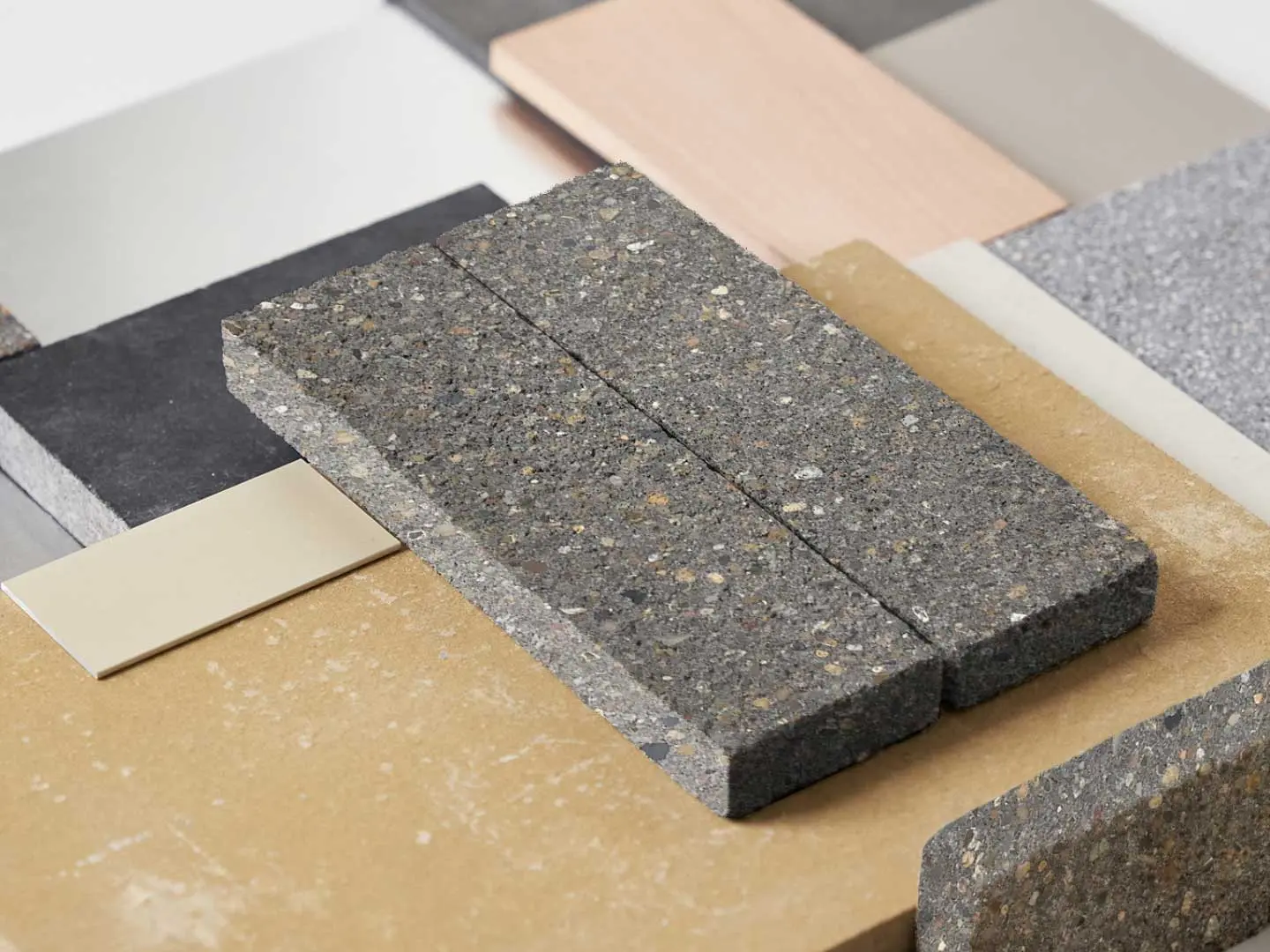
Biomason and Stone Cycling - Ph. Front
Modern Synthesis e GANNI
The Bou bag produced by Modern Synthesis in collaboration with GANNI is made from bacterial nanocellulose, an exceptionally fine and durable form of cellulose obtained by bacterial fermentation. This biotextile, free from components of animal origin, is a refined alternative to traditional leathers and synthetic materials. Bou is a product that marks a significant step in GANNI’s mission to redefine the concept of responsible luxury, promoting the use of bio-based materials.
“By collaborating with Modern Synthesis to develop our iconic Bou Bag from bacteria, we are one step closer to our goal of having 10% of the materials from our Fabrics of The Future by 2025” Lauren Bartley, Sustainability & CSR Director at GANNI.
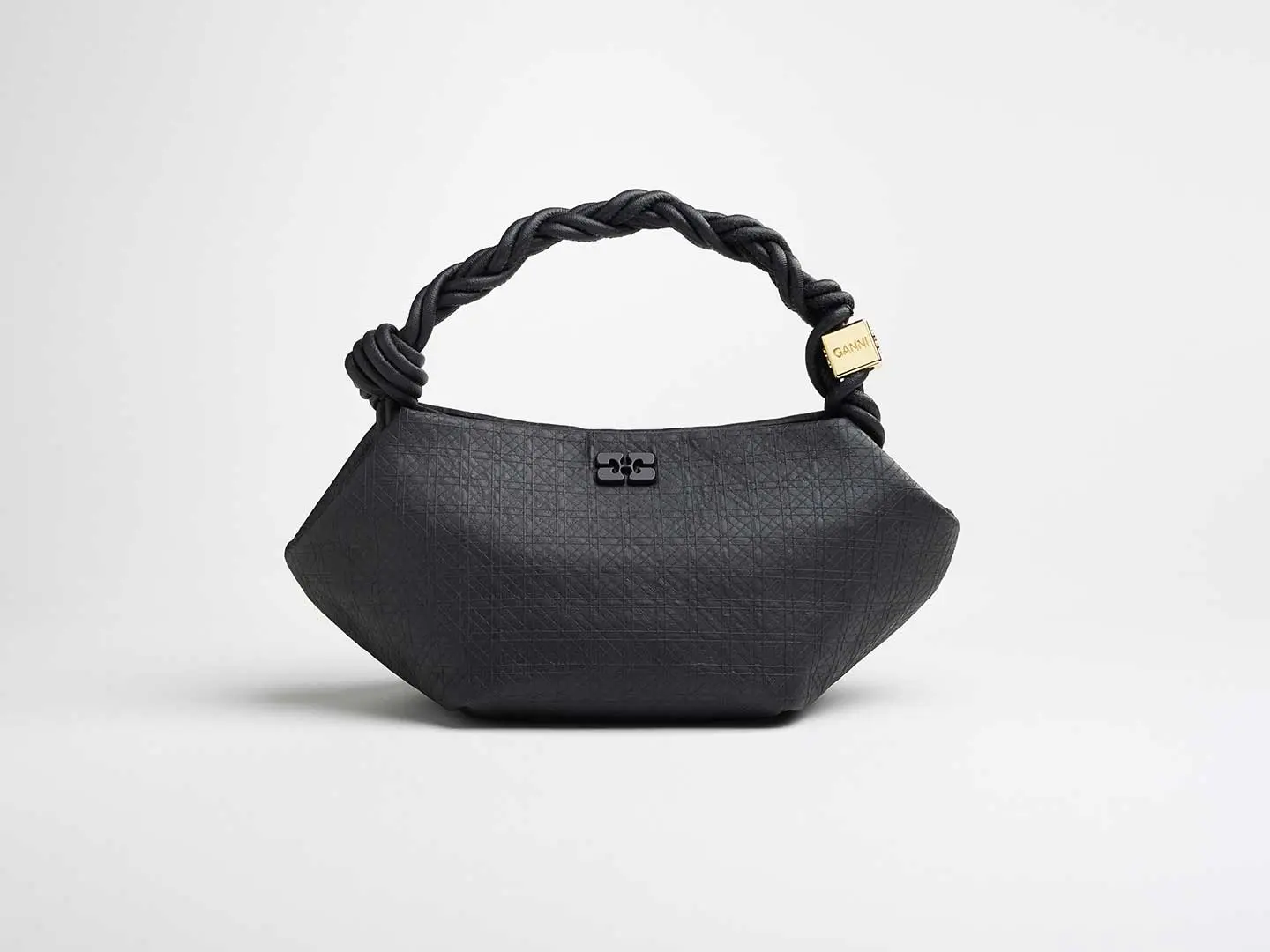
Modern Synthesis, GANNI
OFFPOLINN di Andrés Jaque
Cooking, digesting, growing and decomposing are interconnected processes that create alliances between different life forms. This is the central idea of Transspecies Kitchen, a project stemming from a partnership begun in 2021 between Andrés Jaque’s international architecture firm OFFPOLINN and the Spanish stone crafting company M-Marble Project. This unique kitchen seeks to decarbonize cooking, using fermentation as the main method of food preparation. The kitchen, located at the Middleheim Museum in Antwerp, Belgium, is not powered by gas or electricity, but harnesses the energy generated by molecular interactions. Functioning as a collective digestive system, the Transspecies Kitchen shows that metabolism is a shared process, dependent on collaborations that go beyond the human sphere. This unique kitchen is meant to decarbonize cooking, using fermentation as the main method of preparing food.


 Sustainability
Sustainability




